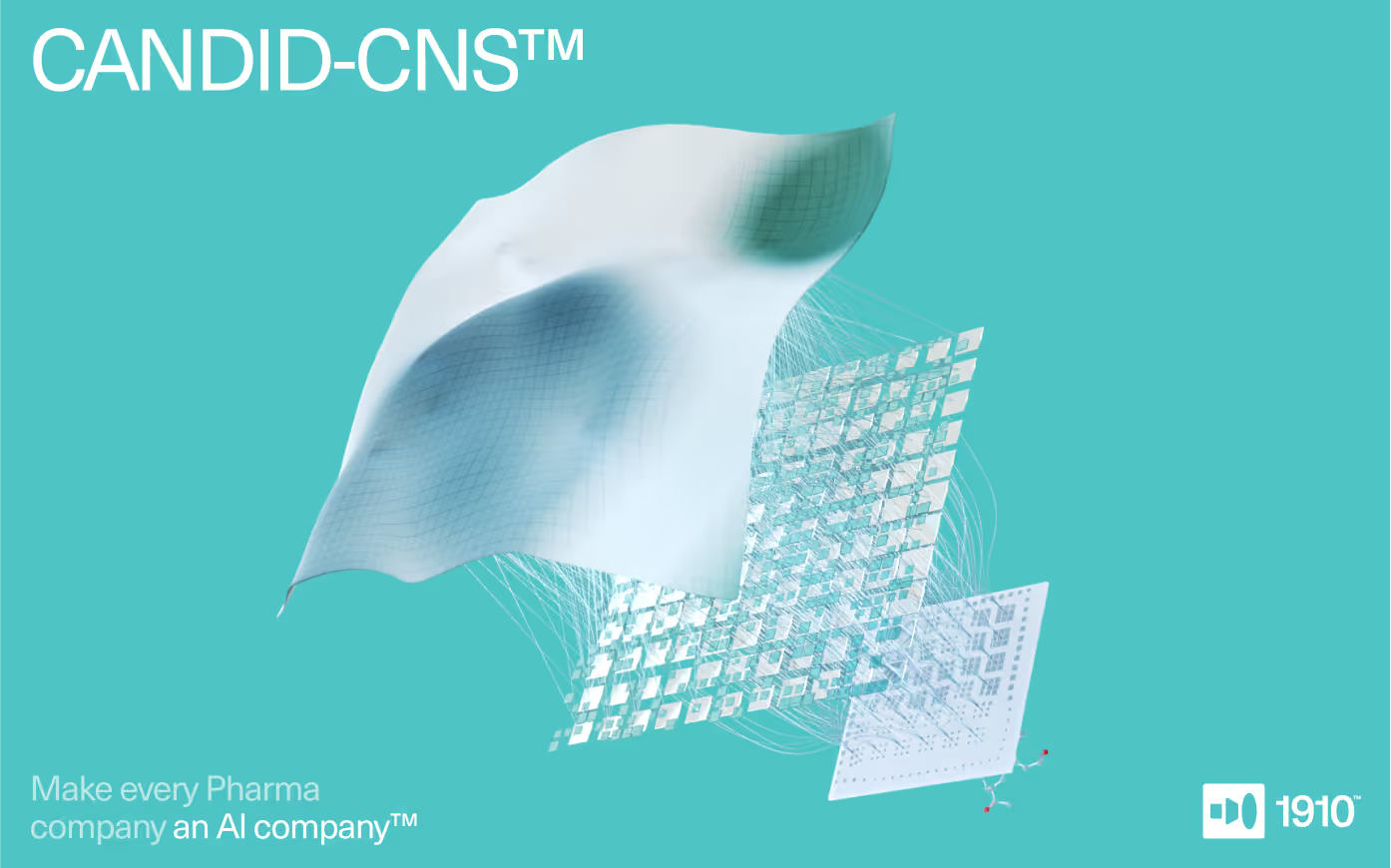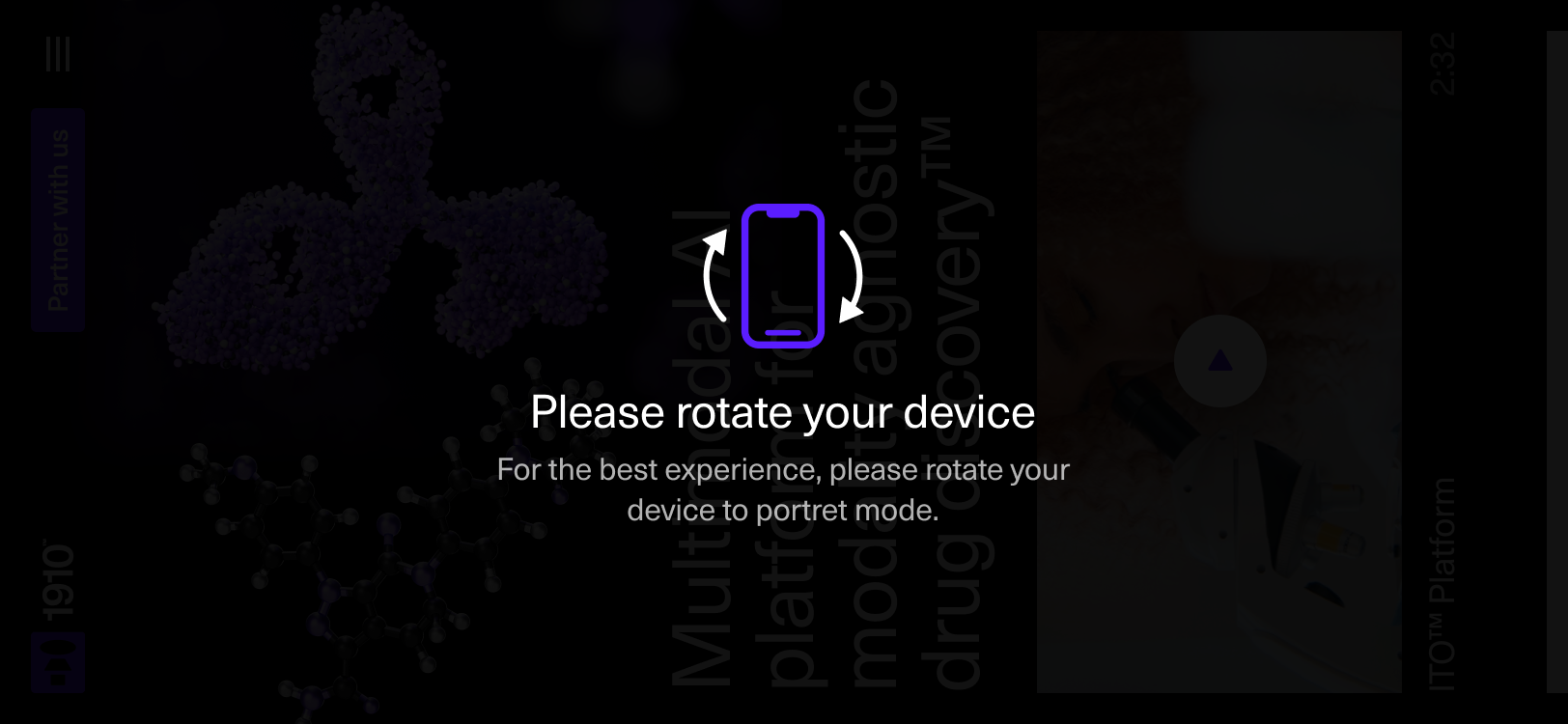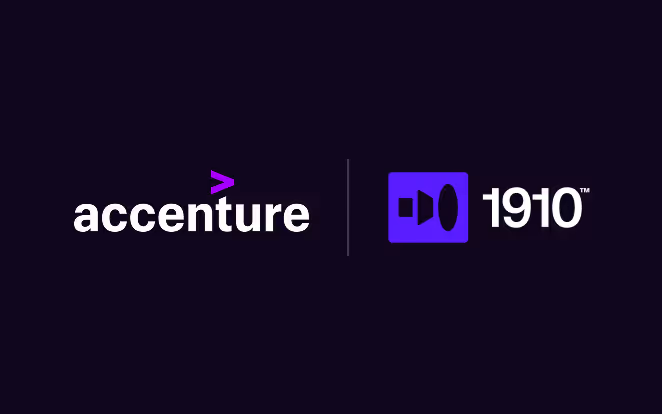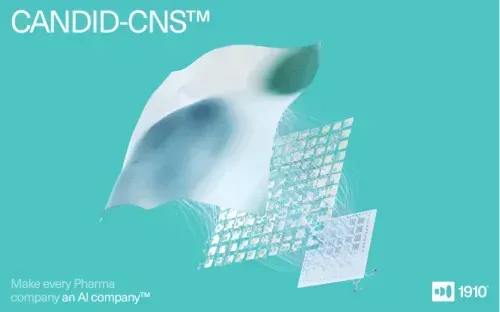1910 Launches CANDID-CNS™, an AI Model for Blood-Brain Barrier Permeability Prediction that Outperforms the Industry Standard
4 min read
October 17, 2024
Press Release
External Writer

CANDID-CNS™ achieves an 83% success rate for predicting small molecule brain penetration and distribution versus a 64% success rate for the industry standard CNS-MPO score
Only ~2% of small molecule drugs can cross the blood-brain barrier, making it challenging to discover and develop therapeutics for diseases of the central nervous system
CANDID-CNS™ is an AI model with agentic capability, and it is one of hundreds of AI models within the Multi-AI Agentic System of 1910’s ITO™ Platform, which is primed to revolutionize the discovery and development of both small and large molecule therapeutics
BOSTON – October 17, 2024 – 1910, the only biotechnology company advancing small and large molecule drug discovery with a multimodal AI platform powered by laboratory automation, today announced the launch of CANDID-CNS™, an attentive graph neural network for predicting the blood-brain barrier (BBB) permeability and distribution of small molecule drug candidates designed to treat diseases of the central nervous system (CNS).
CANDID-CNS™ achieved an 83% success rate for predicting small molecule brain penetration and distribution versus a 64% success rate for the industry standard, CNS Multiparameter Optimization (CNS-MPO) score. Importantly, CANDID-CNS™ outperformed all other industry benchmarks, regardless of the metric used for CNS penetration and distribution, e.g., site of action, logBB and Kp,uu.
Results from this study evaluating multiple AI model architectures were published in a preprint titled “Attentive Graph Neural Network Models for the Prediction of Blood Brain Barrier Permeability,” which can be accessed here (DOI: 10.1101/2024.10.12.617907).
1910's end-to-end Input-Transform-Output, (ITO™) platform was developed to address the key challenges of small and large molecule drug discovery, from novel hit discovery to hit-to-lead and lead optimization. The platform consists of hundreds of proprietary models, including CANDID™, a multi-AI agentic system for small molecule lead optimization. Additionally, it contains foundation models that can be deployed with the use of an AI agent to predict a drug candidate’s ability to meet a comprehensive set of characteristics required by the Food and Drug Administration for the advancement of a drug into clinical development, and eventual regulatory approval. Within the suite of CANDID™ models is CANDID-CNS™, which leverages recent advancements in artificial neural networks, specifically graph neural networks (GNNs), which are highly effective at processing chemical and molecular data, and includes attention mechanisms that enhance the GNNs’ ability to understand the chemical space of BBB-permeable compounds. CANDID-CNS™ is trained on site-of-action data, a clinical and real-world evidence endpoint, for which logBB and Kp,uu are measured to predict.
Our results suggest that CANDID-CNS™ is state-of-the-art for the prediction of small molecule drugs that can penetrate and distribute within the brain, with an 83% success rate of its predictions compared to the 64% success rate of the industry standard approach. The anatomy and physiology of the blood-brain barrier make it challenging to develop therapeutics for diseases of the central nervous system, and consequently only two percent of small molecule drugs can cross the BBB. This makes drug development for CNS diseases difficult, as traditional preclinical models are unable to routinely identify molecules that would have a high probability of success in the clinic. This challenge underscores the unmet need and opportunity for AI, which our development of CANDID-CNS™ is bringing to fruition.
Jesse Collins, PhD
Lead author and AI Research Scientist at 1910
The implications of this work for neuroscience drug development and AI more broadly are immense. One of the challenges of building AI models in pharma is that multiple metrics are used to assess the same or similar parameters. In this case, the pharma industry uses both logBB and Kp,uu to assess brain distribution. Most studies have used either logBB or Kp,uu but not both, thus making dataset generation and AI model training difficult. 1910's ITO™ platform overcame barriers in data scarcity, model training, and computing power to build CANDID-CNS™, which is trained on site-of-action data, a clinical and real-world evidence endpoint, for which logBB and Kp,uu are measured to predict. Impressively, we show that regardless of metric (logBB and Kp,uu), CANDID-CNS™ maintained its state-of-the-art performance compared to industry benchmarks. We are energized by how CANDID-CNS™ and the broader 1910 ITO™ platform will enable pharmaceutical companies to overcome the high clinical failure rate of neuroscience therapeutics.
Jen Asher, PhD
Founder and CEO of 1910
1910 offers its ITO™ platform to pharmaceutical and biotechnology companies via three partnership models: co-discovery, co-engineering, and platform-as-a-service. More information is available at 1910.ai.
About Input-Transform-Output, (ITO™) Platform
1910’s ITO™ platform is a scalable, end-to-end AI solution designed to deliver better drug candidates with applications across all modalities and therapeutic areas. It is a multi-AI agent system comprising hundreds of models that leverages federated learning alongside three proprietary data streams – computational data, wet lab ground truth biological data and wet lab proxy biological data. 1910’s ITO™ platform empowers drug discovery teams to achieve high precision target identification, enhanced molecule design, and simulation of ADMET properties with unprecedented precision. These solutions enable R&D leaders to make data-driven decisions with higher confidence, thus increasing the probability of clinical success, while decreasing cycle times for experimental iterations and reducing the overall cost of drug development.
About 1910
1910 is the only biotechnology company advancing small and large molecule drug discovery with a multimodal AI platform powered by laboratory automation. We integrate AI with three proprietary data streams – computational data, wet lab proxy biological data, and wet lab ground truth biological data – to deliver novel drug candidates and software solutions to leading pharma and tech partners, and advance our internal pipeline for neurological, autoimmune diseases, and cancer. We recently announced a commercial partnership with Microsoft to bring our ITO™ platform to pharmaceutical companies at scale.
1910 was launched in 2021 with a combined seed and Series A funding of $26.1M from M12-Microsoft’s Venture Fund, Playground Global, OpenAI’s Sam Altman, FoundersX Ventures, and other leading investors. We have since established our HQ and lab facilities in Boston’s Seaport District and continue to hire a world-class team. To learn more, visit 1910.ai
Contact
1910 PR
media@1910.ai







